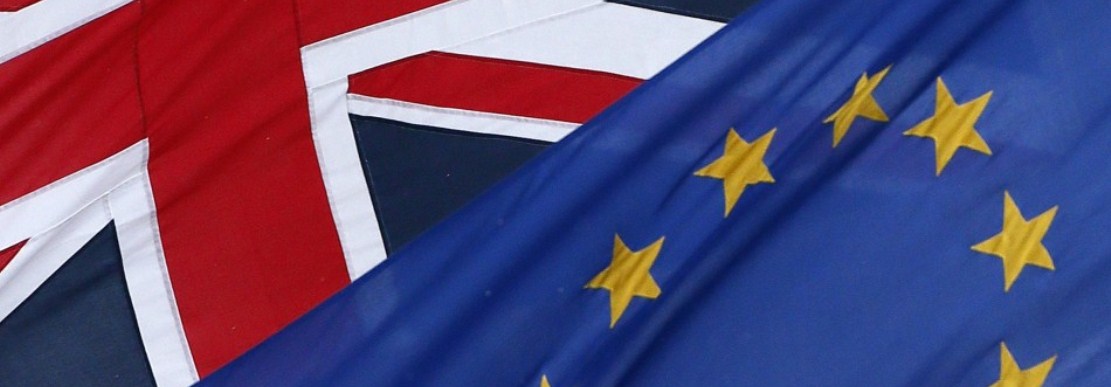 Prominent Brexit campaigner David Davis MP, in a speech on 4th February 2016, joined Lord Lamont in proposing that the relationship between the EU and Canada provides a model for the relationship that the UK could adopt as an alternative to full EU membership.
Prominent Brexit campaigner David Davis MP, in a speech on 4th February 2016, joined Lord Lamont in proposing that the relationship between the EU and Canada provides a model for the relationship that the UK could adopt as an alternative to full EU membership.
The relationship between the EU and Canada was presented as a much more attractive model than other post-Brexit alternatives such as the relationship that the EU currently enjoys with Norway (through the European Economic Area) and Switzerland (EFTA membership and a collection of bilateral agreements covering a multitude of different areas).
Canada reached agreement with the EU for a Comprehensive Economic and Trade Agreement (CETA) in August 2014. The agreement is an international treaty between the EU and Canada and the first such agreement to have been struck with a major world economy country. Although the negotiations on the agreement have been concluded it has still to be ratified by each of the EU’s member states and by the European Parliament. It is not expected enter into force before 2017.
CETA is presented by the European Commission as the most far-reaching bilateral agreement the EU has signed with a third party to-date. This is because the agreement does not just cover tariffs on trade but also is intended to reduce a range of non-tariff barriers to trade in goods and services between the EU and Canada. On entering into force the intention is that it would allow EU and Canadian exporters to sell goods and services to one another more easily and increase investment between the two markets.
The ‘Comprehensive’ in the agreement comes from that fact that the agreement provides for almost comprehensive free trade (98% of EU goods exports will enter Canada duty free), it opens the market in public procurement, eliminates barriers to service including allowing for the mutual recognition of qualifications, allows for the preservation of Geographical Indicators (i.e. allows for producers to have the status of their specialist products protected such as Prosciutto di Parma – although the British Government did not push for any UK products to be listed in the agreement), and allows for other measures to simplify trade such as giving the EU and Canadian certification bodies the ability to pass goods as meeting the standards of the other side (and to avoid situations where there is a doubling up of testing to satisfy two sets of regulators).
CETA has also attracted opposition being described as the ‘little brother’ of the proposed Transatlantic Trade and Investment Partnership (TTIP) between the EU and USA because, among other concerns it includes an investor state dispute settlement (ISDS) clause and the opening up of public service tendering processes to Canadian companies.
The attractiveness of the CETA, as an alternative to Brexit campaigners, is that is provides a model for EU relations which allows for access to the EU’s single market whilst neither being part of the EU’s legal system and with the free movement of labour provisions of the single market no longer applying to the UK. Of particular interest for advocates of Brexit in this scenario is the proposition that UK businesses would only be required to conform to EU standards and regulations when exporting to the EU’s single market.
Further enthusiasm would come from the fact that on a CETA-type agreement no direct contribution would need to be made to the EU budget as is the case with the agreements that are in place covering the EEA states, such as Norway, and Switzerland.
As David Davis described the EU’s agreement with Canada “[as] a perfectly good starting point for our discussions with the Commission”. A cost, as Davis also acknowledged, is that in leaving the EU the UK would then also not be covered by the trade agreements that currently cover its trade and “would simultaneously need to a massive programme of simultaneous negotiations to negotiate free trade agreements” with the UK’s other trading partners.
As CETA’s title indicates it is a trade agreement. It does not cover the full range of activities and responsibilities that come with EU membership.
Canada is also the EU’s 12th most important trading partner. For Canada the EU is the second biggest trading partner after the US and accounts for nearly 10% of its external trade.
In contrast the EU is the UK’s biggest trading partner accounting for 44.6% of UK exports of goods and services, and 53.2% of UK imports of goods and services. This would put the UK in a situation more akin to Switzerland and whose relationship with the EU extends significantly beyond trade issues.
Switzerland’s relationship with the EU which operates on the basis of around 100 bilateral agreements, in addition to its trade agreements with the EU, and currently managed by 15 joint committees. Switzerland having in place a free movement of person’s agreement with the EU.
A CETA-type relationship with the EU would, of course, see Britain removed from the EU’s decision making institutions and so the capacity to influence EU law making would not be directly through the EU’s legislative processes but seeking to have impact via diplomacy with the European Commission or indirectly through other EU member states. Bremain campaigners will certainly point to a CETA option for the UK presenting the same costs as hold for Norway or Switzerland as ‘rule takers’ rather than ‘rule makers’.
By Professor Richard Whitman senior fellow, The UK in a Changing Europe and Professor of Politics and International Relations, University of Kent. This blog also appeared on the ESRC’s UK in a Changing Europe website available at: http://ukandeu.ac.uk/oh-canada-an-alternative-for-the-uk-after-brexit/
